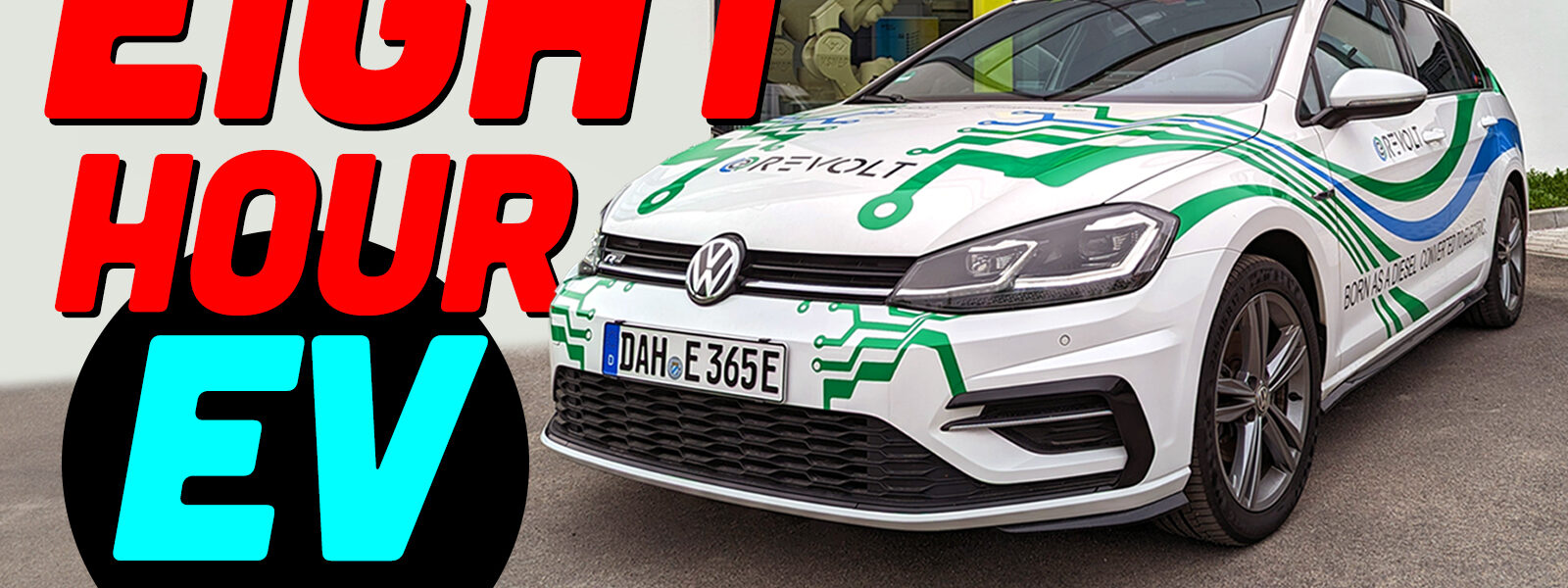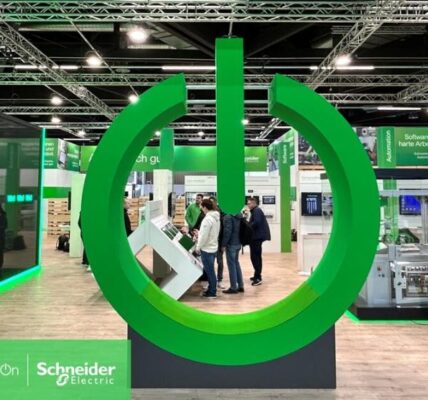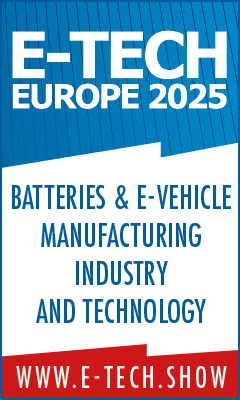“Why we don’t just convert existing gasoline vehicles to electric power?” It’s a common question when it comes to electrifying transport, especially from people less than savvy about how cars and trucks actually function. By and large, electrifying ICE-powered vehicles involves a lot of fussy engineering and compromises that make the juice not worth the squeeze. However, in some niche circumstances, it can pay off – as one German startup aims to prove.
The company, known as e-Revolt, specializes in converting ICE cars into EVs. This is no specialty shop tinkering on Jaguars, Ferraris, and other high dollar classics, though. It’s all about the mainstream, with the startup instead targeting models from the Volkswagen Group. Many of the company’s cars sit on similar or shared platforms, making it possible to build a kit that can suit a wide variety of vehicles without requiring major modifications.
The company’s EV conversion could theoretically be a direct fit for models including the Volkswagen Golf and Polo, along with the Audi A3 and Seat Leon; perhaps as many as 42 models in total. That could be a huge winner, enabling the conversion to sell to a much wider customer base, in turn helping to amortize the cost of development across more sales. It’s far easier for the company to make a profit on a one-size-fits-all kit that suits as many vehicles as possible.
This is the company’s prototype Golf conversion in testing with TÜV SÜD. Note the green frame, which mounts the EV components where the combustion engine would normally go. Beyond slashing development costs, the company also wants its EV conversions to be quick and painless to install.
Presently, conversions are the sort of thing that might take many weeks or months for a dedicated shop to execute. In comparison, e-Revolt is targeting a conversion time more like eight hours. On average, conversions take around a day from start to finish. Same-day, or even same-week service, would be a lot more convenient for customers, reducing the need for loaner cars or relying on other transportation. It would also enable the company to scale its sales far quicker, without having cars stuck in workshops for weeks on end tying up lifts and installers.
Managing director and technical lead Rolf Behling noted the company’s mission is all about optimizing for these goals. “It’s a production; that means you have to think about how you can do it quicker and easier and so on,” explains Behling, adding “But this works only if you have a lot of volume, because you have to put in a lot of work and money upfront to develop all this.”
To achieve such a quick and easy EV conversion, the company developed a kit that would simply drop into a variety of Volkswagen Group models. The combustion engine is first removed from the vehicle, and then the EV motor and associated components are installed in its place in a frame that bolts up to the engine’s mount points. “That’s why we are so much faster than an individual solution,” says Timo Walden, an investor and project manager at e-Revolt. “So, the frame here is a big part of our fastness.” The company’s model is to have installations handled by third-party partner workshops.
Eight hours is fast, but it’s a believable and reasonable target for a bolt-in conversion kit. Modern VAG cars can be pulled apart pretty quickly by an experienced wrench, and a kit that’s properly designed to interface with factory pickup points could conceivably be a quick install. It’s an entirely different ball game to engine-swapping or EV-swapping classics in a bespoke fashion, which involves arduous and time-consuming design and fabrication.
The range of cars converted with the kits is on the order of 250 to 300 km (155 to 186 miles). It’s not a lot compared to modern EVs, and is more in the range of an earlier generation of models like the Nissan Leaf. Like many EV conversions, though, e-Revolt’s kit isn’t exactly cheap, coming in at around €12,000 to €15,000 ($12,915 to $16,143 USD). That’s not a bad price for what you’re getting, but it’s still a hefty sum to spend on an existing car. The company notes that the modular nature of its installs means that upgrades will be possible down the road, too, such as installing newer batteries that could extend range.
For now, the company has its prototype conversion fitted to a Volkswagen Golf wagon, and has been making the rounds of European trade shows. The team is also busy pursuing on-road approval for its series production conversion models through TÜV, the notoriously tough German organization charged with handling inspections and approvals for road-going vehicles. The prototype Golf has already passed this milestone. The Autopian has contacted e-Revolt for more information regarding its timeline and plans to offer conversion kits to the mass market.
The general idea of converting existing vehicles into EVs is an appealing one. It’s often posed as a no-brainer for making the best possible use of existing stock. The idea is that plenty of ICE cars on our roads have perfectly serviceable chassis, interiors, and running gear. Rather than tossing them out, it makes more sense to re-fit them with EV drivetrains so they can be used well into the future.
This argument could make some sense if you were talking about EV converting 25-year-old economy cars with tired engines but solid bodies, for example. When you’re talking about modern cars under a decade old, the justification is a little less clear. Pulling out a functional drivetrain to build an EV that doesn’t perform as well as contemporary models can be a lot of fuss for not a lot of payoff.e-Revolt still has some hurdles to overcome before it’s a mainstream operation converting German’s ICE-propelled cars into cleaner electric conveyances. Beyond on-road approvals, it also has to be able to build its conversion kits in significant numbers and find a way to connect with customers eager to buy its products. Conversions like these could yet become a nascent cottage industry in Germany, Europe and beyond—if they offer customers a price point and driving experience that suits them.








